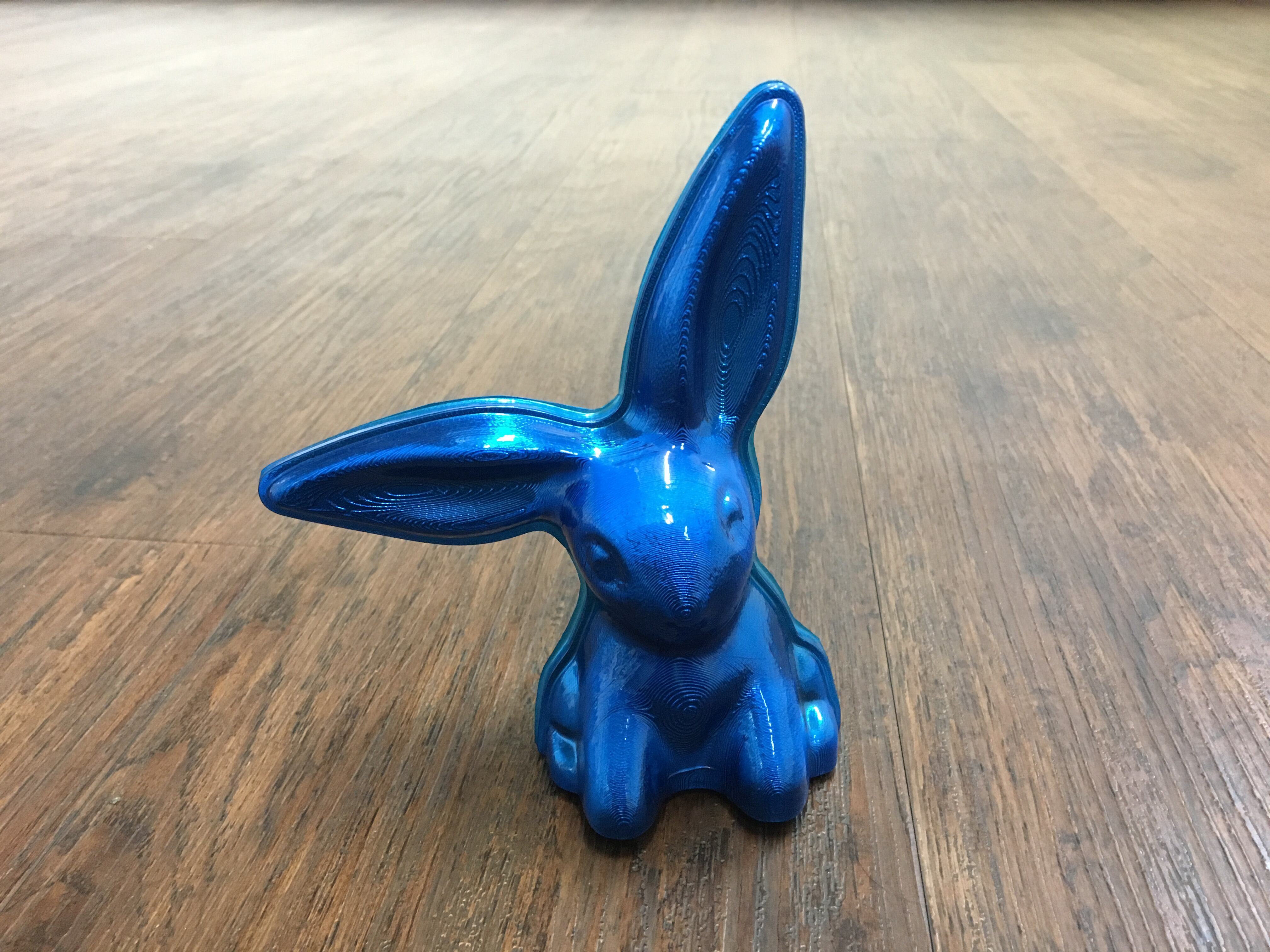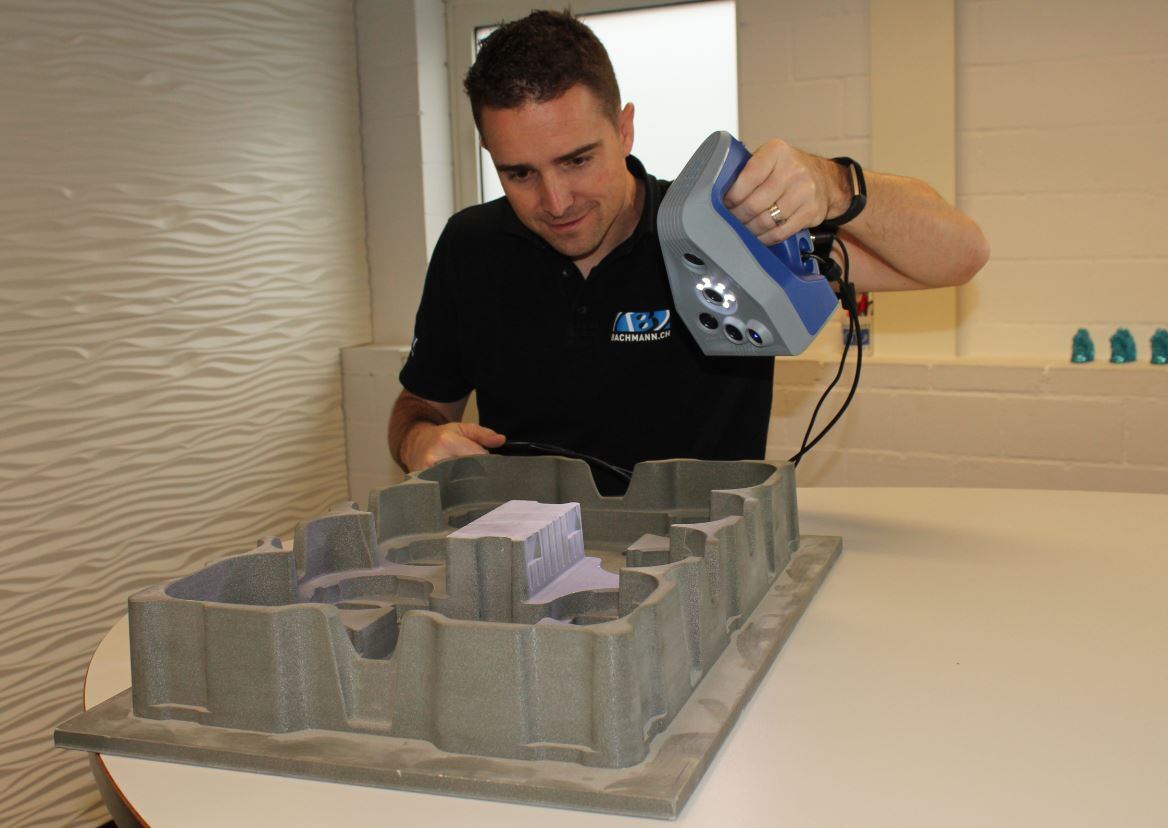The company based in Hochdorf, Switzerland, makes customized chocolate packaging for Birthdays, Easter, and Christmas and previously used a handmade pilot tool, which could take up to 20 hours to replicate the chocolate’s shape before buying an Artec 3D scanner from 3D Model.
Speeding up work processes

It recently used an Artec Space Spider to 3D scan and create a digital model of its original chocolate bunny, which is then processed using a CNC (Computer Numerical Control) machine. The total time from start to finish now takes one hour.
"With the help of 3D scanners, we were able to strongly simplify and speed up our work processes,” said Jörg Nussbaum, design engineer, Bachmann Forming.
“Producing a master model took up to 20 hours with the old method, today it can be done in just a few minutes."
Bachmann uses a thermoformal process to create its plastic film packaging, which means the film is first heated to soften it, creating a vacuum which is then pulled over the master form which has small holes in it to draw the film in.
The film sticks to the model and mimics its shape before being cooled down until it becomes solid.
According to Christiane Fimpel, sales additive manufacturing, 3D Model, Germany, 3D scanning and digitization has dramatically changed the way Easter treats are created and packaging companies who design wrappings for chocolate Santas and Easter bunnies want to create attractive products that ‘fly off the shelves’.
CNC-controlled milling machines
She said just as in the past, when manufacturers needed to create a master form, or pilot tool that has an identical shape to the chocolate bunny most of the original models are conventionally handcrafted, manually ground, cast with epoxy resin or milled from wood.
The entire process could take up to 20 hours, depending on the product. But in recent years, this procedure has changed thanks to digitization.

Pilot tools are now designed using computer-aided design (CAD) and manufactured from blocks of polyurethane on CNC-controlled milling machines.
The Artec Space Spider digitally captures objects that are too complex and time consuming to be measured by hand.
Nussbaum said the 3D scanner is easy to use and doesn’t require adhesive markers to be stuck over an object for tracking and aligning because the algorithms in the software analyze the geometry and color data of the object.
"This is especially useful in the case of chocolate or pralines because it would be hard to stick something on them," he added.
"Before we had Space Spider, this kind of work had to be outsourced, which was time-consuming and cost-intensive.
"Being able to use a 3D scanner in-house is an immense time advantage.”
Scans are usually processed in the autopilot mode of Artec Studio, which automatically edits the data.
The user answers a few questions about the characteristics of the scanned object, then Artec Studio deletes any unwanted data, automatically aligns the scans, and chooses the most effective 3D algorithms for the available data.
